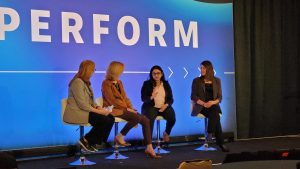A few years ago, an organization’s Net Promoter Score was one of the hottest numbers at a company. It drove marketing campaigns, it was a weighted piece of performance objectives, and established a competitive valuation for that company. However, interest in NPS peaked and then began to decline around 2016. Was it because most organizations readjusted their priorities? Reduced focus on their customers’ opinions? Realized that NPS wasn’t an accurate representation of customer satisfaction, and was being misinterpreted by some organizations? I think the answer to the above is; maybe all three?
I know the reason it happened at Dynatrace. It’s not because our score was lower than expected, quite the opposite. In 2016, we, as an organization, decided we needed to prioritize the voice of the customer and the Dynatrace Experience over a number. If we got that right, the number would follow. We continued capturing NPS metrics and the valuable feedback with it, and have been ever since.
Earlier this year, we launched Dynatrace ONE with a reemphasis on the customer, and their experience. This was an opportunity to begin highlighting our desire to improve on ourselves, and better our relationship with our customer. We continued with a renewed focus on NPS.

A bit of background from an NPS survey organization:
NPS is a customer loyalty metric that measures customers’ willingness to not only return for another purchase or service but also make a recommendation to their family, friends, or colleagues. The main advantages of NPS are close correlation with a company’s growth and easy collection, interpretation and communication of the data. Net Promoter Score is a number from -100 to 100. Scores higher than 0 are typically considered to be good and scores above 50 are considered to be excellent.
It is also important to point out that if NPS data is not collected in the proper way, the number loses its credibility very quickly. The NPS survey needs to be sent to all customers equally and the customer needs to be far enough into their journey where they have had the time to develop an honest opinion through usage of the product and interaction with the company. At Dynatrace, we wait until a customer is 60 days into their journey before we send them an NPS survey. An NPS survey cannot go to customers who are handpicked because they are always very positive. Having predetermined customers selected to receive an NPS survey is not a valid or credible representation of a customer base. A very high Net Promoter Score is tough, if not impossible, to achieve. A company with a high NPS in the software industry, let’s say in the 90s, is either making that number up or is sending the survey to a carefully selected customer set, especially when the industry average for Software & Apps is 31, according to NICE Satmetrix, a co-developer of Net Promoter.
Ok, so we’ve explained NPS, we’ve explained why we’re doing it, now let’s explain why we’re going to improve on how we did it.
One of the key points about an NPS survey system is that it requires daily tracking to identify customer interaction points that need improvement. At Dynatrace, we decided to go a step further and place TV’s around our offices in Detroit, Boston, and Linz with the purpose of displaying timely NPS responses and results. Strategically placing these near our Dev, R&D, Dynatrace ONE, Services, Support, and Leadership office spaces ensures that this feedback is front-and-center at all times. We also include an analysis of the NPS number and associated comments in our daily Dynatrace ONE standups. We do not want this feedback to fall by the wayside, so we are putting it right in front of everyone.

Another difference that Dynatrace is doing in relation to NPS surveys is that we’re not focusing on the number, but focusing on the response.
With every NPS survey, there are two questions asked:
- How likely are you to recommend Dynatrace to a friend of colleague?
- Why did you rate the way you did?
This second question is crucial to our success. Over 80% of our NPS survey respondents take the time to answer this second question. In these comments we find the most valuable keys to our success and our future. We value these responses and treat them with a great deal of care.
Focusing on the number provides you with a metric, focusing on the response gives you a reason to improve, and a way forward. THIS is why we are capturing NPS results. We don’t want to capture a number, promote that on our social channel, and expect everyone to cheer. We want to create an atmosphere, a product, and an organization that constantly improves upon itself. This is what makes Dynatrace special.
How likely are you to recommend this blog to a friend or colleague?




Looking for answers?
Start a new discussion or ask for help in our Q&A forum.
Go to forum